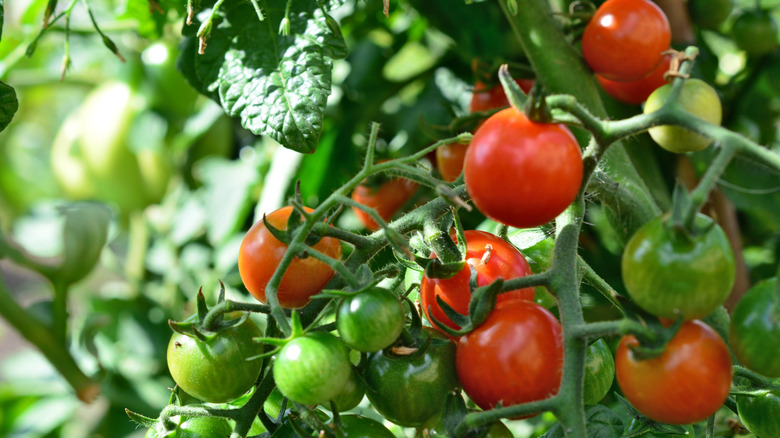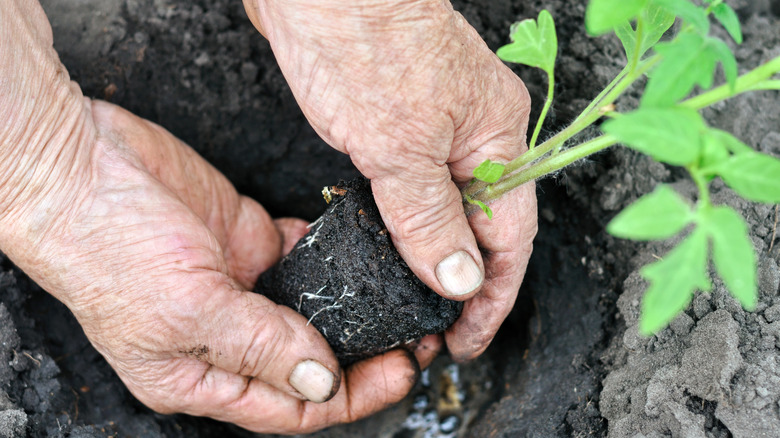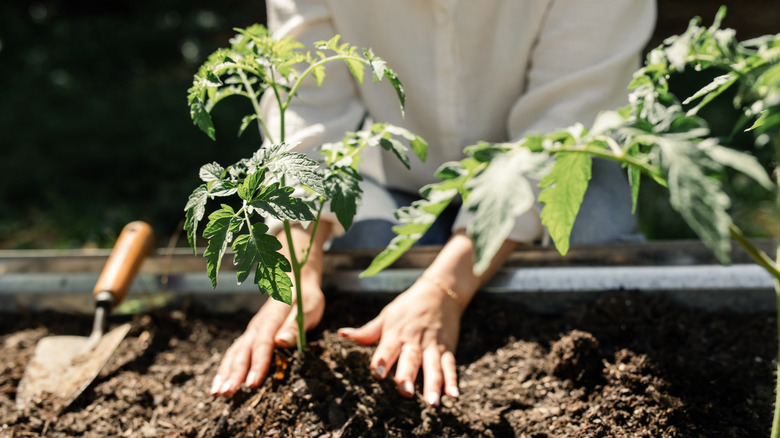The Proven Planting Technique For Healthier Tomato Plants In The Garden
Did you know that in addition to producing mouthwatering fruit, tomato plants also have a surprising superpower that gardeners can take advantage of? While burying the stems of most garden plants can lead to rotting, tomato stems grow roots when covered with soil. So, although there are a few common mistakes gardeners make when transplanting tomatoes, burying the stems of the plants is not one of them. In fact, planting tomatoes deeply in garden soil can produce stronger, healthier plants and lead to earlier harvests.
Gardeners undertake this tried and true transplanting method by removing the bottom foliage of each plant, leaving only the top two or three sets of leaves to remain above ground. There are a couple of ways to proceed with transplanting the seedlings at this point, planting either vertically or horizontally, but with either approach, gardeners help to create a solid foundation for healthier, more resilient plants.
Why burying tomato stems produces healthier plants
If you're an observant gardener you may have noticed small bumps on your tomato plant stems. Those bumps are the buds of adventitious roots, also known as aerial roots. Adventitious roots can form anywhere along the stem of the tomato, so gardeners can take advantage of this knowledge by burying tomato stems in the soil to help the plant produce a large mass of roots. With larger root systems, these nightshade plants are able to take up more nutrients, leading to a more abundant harvest.
Equipped with these well-developed root systems, tomato plants are also able to take up more water. This adaptation creates greater drought tolerance for this vegetable crop. Plus, if you started your tomato plants indoors and the seedlings became leggy, burying their stems can help them develop stability. Leggy tomatoes that would otherwise be tossed around by the wind or easily damaged are better anchored with deep planting.
Deep planting and trench planting tomatoes
Planting tomatoes horizontally is called the trench method, named after the trough gardeners dig in place of a hole. With the trench method all but the top few inches of the plant stem is buried horizontally in a trench that is roughly 3 or 4 inches deep. This technique is best used in cooler climates where plants will benefit from the warmer conditions in the top few inches of the soil. After transplanting tomato plants with the trench method, don't worry if the seedlings are lying on the ground, they will resume their upright position quickly.
In locations where hot weather is a challenge, gardeners should keep plants upright and bury stems vertically in deep holes instead. Planting deeply works particularly well for tomatoes when using biodegradable pots, since the seedlings can be transplanted without disturbing their roots. In addition to growing these nightshade plants deeply in the soil, other tips for growing the best tomatoes in your garden include making sure to grow the crop in full sun and using companion plants such as marigolds and basil.


